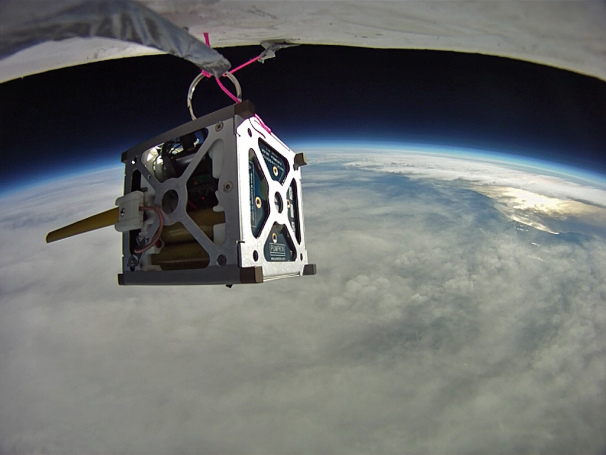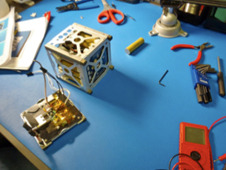According to foreign media reports, NASA’s “PhoneSat†project will launch a series of micro-satellites controlled by Google’s Nexus One at the end of this year for low-cost orbit exploration. Currently, the NASA Arms Research Center at Moffett Field in California, USA, is developing a mini-satellite to use the Android-powered Nexus One smartphone as a controller. The project, "PhoneSat," is part of a larger experiment - a small spacecraft technology project that combines small consumer electronics with nanosatellites. At present, the specific release date of PhoneSat has not yet been determined, but it is still very exciting for its launch scientists. The following inventory of the major characteristics of this mini-satellite.

Figure 1 PhoneSat 1.0 in high air ball test
Two designs for PhoneSat
Based on information provided by NASA’s space technology program, the research team constructed two nanosatellite prototypes that were originally scheduled to be launched at different times. The first model, PhoneSat 1.0, has minimal functionality - the research team wants to test whether the lifespan of a mini-satellite with a smartphone is long enough. The measure of success is whether the test satellite can send back operational health status while in space. And image data. In addition to the Nexus One, satellites also include external batteries and external radio beacons. A watchdog circuit will detect the entire system and restart the Nexus if necessary.
All the accessories will be packed in a 10cm * 10cm * 10cm CubeSat box - in fact, the size of a coffee cup - will create three such units. With only 4 pounds per unit, the entire mini-satellite will be housed in a low Earth orbit rocket-Antar rocket, which can carry loads of up to 15,000 pounds.
Another more advanced model
PhoneSat 2.0, based on PhoneSat 1.0, has been upgraded with a newer Samsung Nexus S; other upgraded features include a two-way S-band radio (for scientists to control satellites from the ground), and solar panels. To increase battery life and GPS transponders. At the same time PhoneSat2.0 design also added a new magnetic momenter coil (an electromagnet that can interact with the Earth's magnetic field) and a reaction wheel that controls the direction of the unit in space.
According to NASA NASA public relations representatives, the first flight of Orbital's Antal rocket in the second half of this year will be launched with two PhoneSat 1.0 models and one PhoneSat 2.0 model.

Figure 2: Assembling PhoneSat 1.0
latest progress
The PhoneSat research team has been ready for this task for several years and is currently testing the limits of the Nexus One. In July 2010, two Nexus One rockets were launched, initially testing the performance of smart phones under high-speed and high-latitude conditions. One of the rockets crashed and the smartphone was destroyed; the other rocket safely landed the Nexus One.
PhoneSat 1.0 has been tested in hot vacuum chambers, vibration, shock and high air ball conditions and all have been very successful. The launch of the mini-satellite is similar to Silicon Valley's entrepreneurial mentality - "the launch of space is the easiest satellite to build at the lowest cost." The PhoneSat flight demonstration file was written.
The construction cost of each PhoneSat prototype is controlled at $3,500. NASA engineers use commercial off-the-shelf hardware in their designs without any modifications. In this task engineers did not make any technological innovations - they simply used a collection of all ready-made products.
The next generation PhoneSat?
These low-cost units not only demonstrate that consumer electronics can be used for larger space exploration experiments, but they also reduce the R&D costs of future NASA's small spacecraft projects. The research team is ready to use PhoneSat for various future space projects, such as lunar exploration, low-cost earth observation, and new technologies and new components for testing space flight. Another planned mission in 2013 was to use the PhoneSat 2.0 satellite for solar physics measurements.
Calcium Hypochlorite,Lime Chlorite,Hypochlorite of Lime
Sanji Chemical Trade Co., Ltd. , http://www.lysjchemical.com
